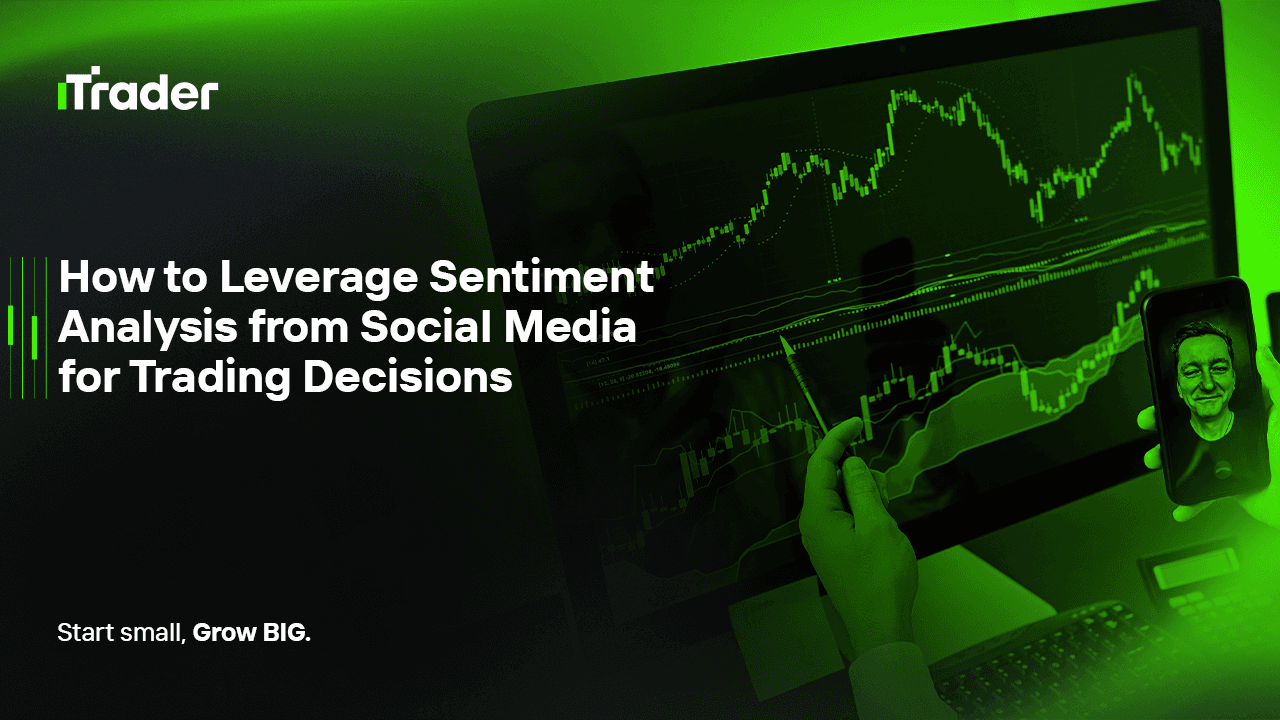2025-06-24
Information moves faster than ever — not just through newswires, but through platforms like Twitter (X), Reddit, Telegram, and even YouTube. These sources shape market psychology in real-time, especially in the forex and crypto markets, where retail participation is high. For prop traders looking to gain an edge, sentiment analysis from social media offers a powerful but underutilized alpha source.

While traditional traders rely on charts and indicators, modern quantitative and semi-discretionary traders are now turning to real-time sentiment signals to anticipate price movements, volatility, and potential reversals. Sentiment analysis does not replace your strategy — it enhances it by measuring market emotions at scale.
Sentiment analysis (also called opinion mining) is the process of using natural language processing (NLP) to quantify the emotional tone of text data — such as tweets, Reddit threads, or news headlines — and classify it as positive, negative, or neutral.
For traders, this means parsing thousands (or millions) of posts to detect:
Sentiment data can be structured (numeric scores) or unstructured (raw text), and with the right tools, it can be integrated directly into both discretionary and algorithmic systems.
The forex market is the largest and most liquid market in the world, yet it is highly sensitive to expectations and psychological drivers. Central bank policies, geopolitical risks, inflation concerns, and employment data are all filtered through public perception.
Here’s how sentiment affects forex:
Each platform has its own tone, velocity, and impact:
from vaderSentiment.vaderSentiment import SentimentIntensityAnalyzer
analyzer = SentimentIntensityAnalyzer()
sample = "EUR/USD is looking weak after the recent CPI numbers!"
sentiment = analyzer.polarity_scores(sample)
print(sentiment)
Output: {'neg': 0.18, 'neu': 0.64, 'pos': 0.18, 'compound': -0.1779}
This score can be aggregated over thousands of posts to build real-time sentiment indicators.
If your technical analysis shows a bullish breakout on GBP/USD, you can use sentiment analysis to confirm:
This helps filter false signals or confirm strong conviction.
Spikes in keyword mentions (“rate hike”, “intervention”, “inflation”) usually precede volatility expansion. Prop traders can scale back size, tighten risk, or look for breakout setups.
Real-time social reactions to central bank events help you understand market interpretation, which is often more important than the event itself.
While sentiment analysis is powerful, it is not foolproof:
The best practice is to treat sentiment as an additional dimension of context, not a trade signal in isolation.
During a recent high-impact inflation print, EUR/USD broke a long-term support. Sentiment data from Twitter and Reddit showed negative sentiment peaking 24 hours before the event. However, the actual price moved upward after a quick fakeout drop.
What happened?
This highlights how sentiment is not just about direction — it’s about timing and imbalance.
If you’re a prop trader working with data, consider building a simple dashboard:
Tools: Python (Dash, Plotly), Streamlit, Google Colab, or TradingView with webhook alerts.
Always check your prop firm’s data usage and compliance rules. Some firms may prohibit the use of certain APIs or discourage social media scraping. Also, avoid trading on misleading or manipulated sentiment (e.g., mass pump schemes) — professional traders protect alpha with integrity.
In the digital era, understanding the crowd is as important as understanding the chart. Social sentiment analysis lets you see behind the candles — into fear, greed, and mispricing.
Prop traders who integrate this tool thoughtfully can:
Sentiment is not magic. But when combined with strong technical, fundamental, or quantitative systems, it becomes a superpower.
2025 Ай Трейдер Глобал ХХК | Компанийн бүртгэлийн дугаар: 15962
Ай Трейдер Глобал ХХК нь Комор улсын Анжуан арал дахь Мутсамуду хотын Хамчакод байрлалтай. Тус компани нь Коморын Үнэт Цаасны Хорооноос (Securities Commission of the Comoros) олгосон L15962/ITGL дугаартай тусгай зөвшөөрлийн хүрээнд үйл ажиллагаа явуулдаг.
Ай Трейдер Глобал ХХК нь “iTrader” нэрийн дор үйл ажиллагаа явуулдаг бөгөөд (Форекс) арилжааны үйл ажиллагаа явуулах эрхтэй. Компанийн лого, барааны тэмдэг, вэбсайт нь зөвхөн Ай Трейдер Глобал ХХК компанийн өмч юм.
Ай Трейдер Глобал ХХК -ийн охин компани болох : iTrader Global Pty Ltd, Австралийн компанийн бүртгэлийн дугаар (ACN): 686 857 198. Энэ компани нь Opheleo Holdings Pty Ltd компанийн албан ёсны төлөөлөгч бөгөөд Австралийн санхүүгийн үйлчилгээний төлөөлөгчийн дугаар: 001315037 -тай. Австралийн санхүүгийн үйлчилгээний лицензийн дугаар: 000224485 -тай Level 1, 256 Rundle St, Adelaide, SA 5000 хаягт байршдаг. Анхааруулга: Энэ байгууллага нь энэхүү вэбсайт дээр болон дамжуулан арилжаалагдаж буй санхүүгийн (арилжааны) хэрэгсэл нийлүүлэгч биш бөгөөд ямар нэгэн хариуцлага хүлээхгүй болно.
Эрсдэлийн сэрэмжлүүлэг: CFD арилжааны хөшүүргийн улмаас хөрөнгөө хурдан алдах өндөр эрсдэлтэй тул бүх хэрэглэгчдэд тохиромжгүй байдаг.
Фанд, CFD болон бусад өндөр xөшүүрэгтэй арилжаа нь хэрэглэгчээс нарийн төвөгтэй ойлголтуудын талаар тусгай мэдлэг шаарддаг. Хөшүүрэгтэй арилжаанд оролцогчдын 84.01% нь алдагдал хүлээдгийг судалгаанууд харуулдаг тул хөшүүрэгтэй арилжаанд орохоос өмнө хөрөнгөө алдах маш өндөр эрсдэлтэй болохыг анхаарна уу.
iTrader нь аливаа иргэн, хуулийн этгээдийн өмнө xөшүүрэгтэй арилжааны эрсдэл, алдагдал, бусад хохирлыг бүхэлд нь хариуцахгүй болохыг мэдэгдэж байна.
Энэхүү веб сайтын мэдээ, мэдээлэл нь зөвхөн мэдлэг түгээх зорилготой тул хэрэглэгч та бие даан шийдвэр гаргана уу.
Хязгаарлалт: iTrader нь вэбсайт болон үйлчилгээгээ тухайн орны хууль тогтоомж, дүрэм журмаар хориглосон орнуудад оршин суугчдад чиглүүлдэггүй. Хэрэв та энэхүү вэбсайтыг ашиглахыг хориглосон оронд байгаа бол вэбсайт болон үйлчилгээг ашиглахдаа тухайн орны хууль тогтоомжид нийцэж байгаа эсэхийг шалгах үүрэгтэй. iTrader нь вэбсайтынхаа мэдээлэл бүх оронд тохиромжтой эсэхийг баталгаажуулдаггүй.
Ай Трейдер Глобал ХХК нь зарим улс орны иргэдэд үйлчилгээ үзүүлэхээс татгалздаг болно. Жишээлбэл: АНУ, Орос, Бразил, Канада, Израйл, Иран.